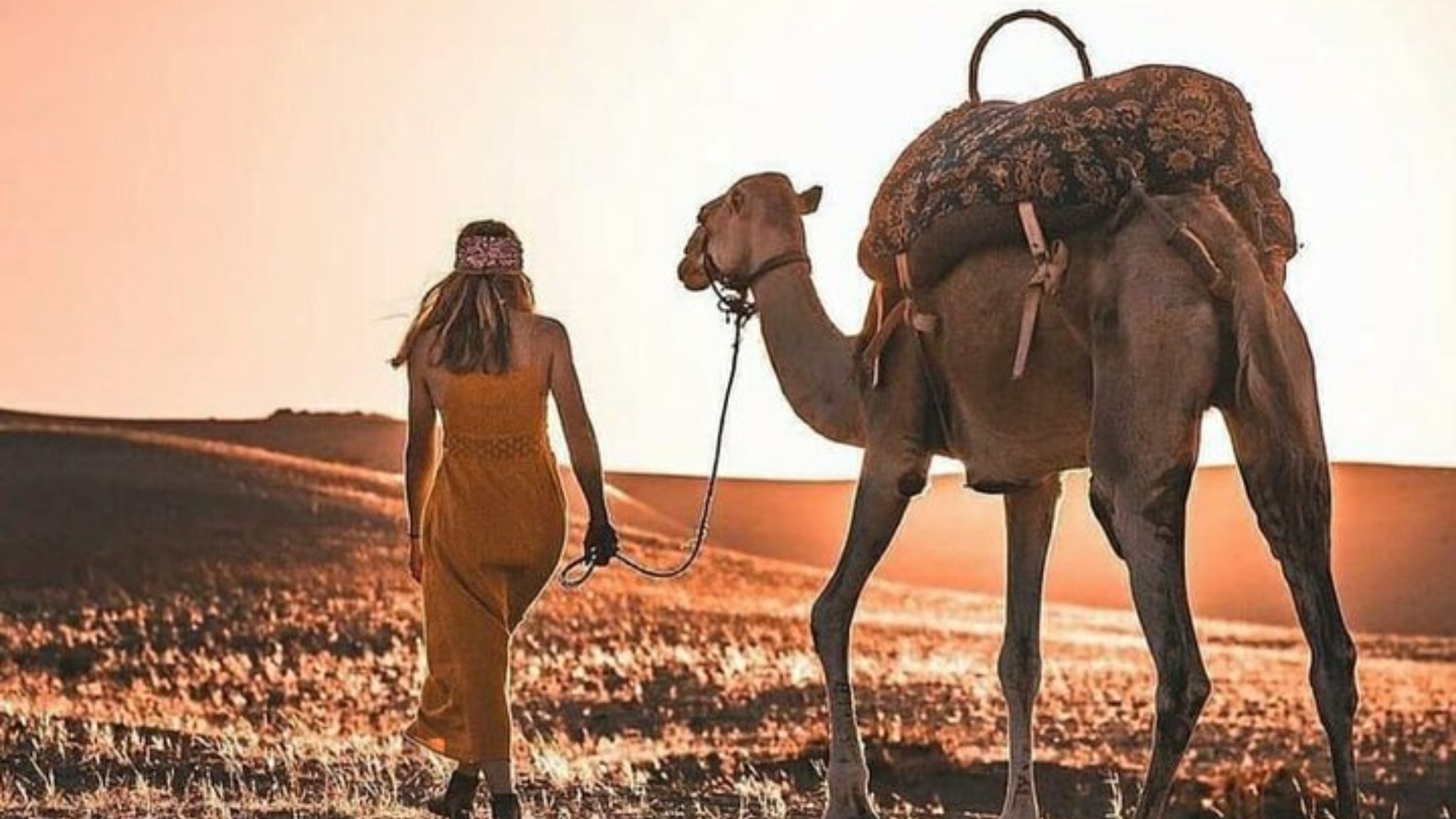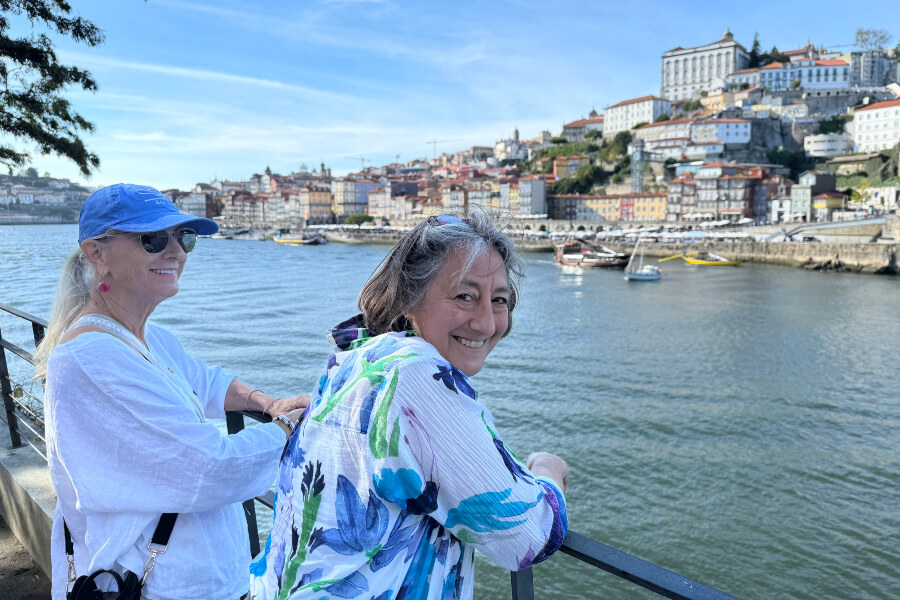Many of us at midlife are looking to chart a new path that also builds upon our past experiences, to have flexibility for more “me” and family time, and to give back to others. But how to forge a life that’s fluid, engaging, and rewarding as we move through our 50s and beyond?
Let Emily Kearns show you how she created what she calls “a patchwork life.” NextTribe met Kearns in North Andover, Massachusetts, via her art installation project, Balik Kampung—A Village Return, which shares the life-long, cross-cultural love affair between Kearns and her Malaysian host family, with whom she lived for one year as an exchange student in 1977. Their special relationship is brought to life through photos, collage, film, storytelling and artifacts. But getting to know the woman behind the work reveals a fascinating and inspiring example of how the totality of a woman’s life experiences can lead to a new track—one that expands life in ways that our younger selves never would have imagined.
Kearns was a 16-year-old Irish-Catholic high-school student living in Massachusetts when she embarked on a trip that would change her frame of reference. She had originally wanted to spend a year abroad studying in France or Switzerland. Those opportunities didn’t open up, but she was given another choice for her 1977 American Field Service foreign exchange student placement.
The destination would be Malaysia. Her host family would be Muslim.
Kearns filled me in on personal backstory at a rapid clip. (“I come from a family of six siblings. I had to talk fast to get heard.”) She explained her desire to travel away from home. “Andover was a limiting environment,” she said. Her father was a mathematician and college professor. Her mother was a scientist. “We were highly educated, but in Andover, we were low-income.” Speaking about her personal background, Kearns related, “The 1960s imploded my family. The war in Vietnam, the resulting counter-culture, and the suicide of a brother—we underwent major upheavals.” That specific point in time shaped Kearns’ views about “being in the moment and being present.”
Read More: How The Diary of Anne Frank Drew Two BFFs Together—and Gave Them the Shock of Their Lives
Eastward Bound

Kearns with her Malaysian family in 1977.
Having always been interested in other cultures, Kearns was delighted with the assigned location. “Malaysians are known for their hospitality,” she said. “The family was very welcoming and accepted me as I was. My host father treated me as a girl who loved the activities that Malaysian boys do—like fishing!” She added, “They saw me, and they got me.” Another common thread that strengthened their mutual bonds was an attachment to their respective religions and core values. The relationship with Kearns’ host family would span 40 years. She returned five times during that period.
With her last visit in 2018, Kearns determined that she would share how her relationship embodied the “universality of the human experience.” This led to the development of a multimedia exhibit: Kearns wanted to push the envelope beyond mere photographic documentation. Film, collage, and diaristic elements were added. The goal was to create a “counter-narrative” to the current climate of intolerance toward those who have been defined as “the other.” Kearns states in the exhibit program that “Balik Kampung – A Village Return is an ongoing collaborative effort aimed at creating and celebrating the opportunity to grow friendship and love across cultures.”
Creating Her “Heart Legacy”
Perhaps those cross-cultural journeys opened her up to new possibilities over the years. As Kearns related her backstory, she interspersed her account with, “I’ve pivoted three or four times in my life,” adding, “I’m a hybrid person.”
Indeed.
When Kearns was younger, she believed that her path would be the route of an academic. She received her BA in Political Science. Then she trained as a sociologist, garnering a Masters degree. (Kearns also has an Executive MBA, which she earned at the age of 55.)
However, it was two family situations that changed the lens through which she viewed her trajectory. The first was what Kearns described as an “awakening,” when she gave birth to her daughter at 27. She put her goal of achieving a doctorate on hold while she was raising her child. Though trying to remain true to herself, her perspective shifted due to the “realities of parenting.” At age 31, following a divorce, those realities included the responsibilities of single parenthood. It would be several years before Kearns continued her pursuit and the ultimate completion of her PhD.
The second “a-ha” moment occurred when she was 38 years old, and both her parents were impacted by dementia. Kearns understood that she had reached a crossroads where she had to make choices. She opted for what she calls “the heart legacy,” making “who you love and the relationships that you form” tantamount to your agenda.
For a decade, Kearns devoted herself to being part of her parents’ journey through an illness that would lead to her next endeavor. Using the experiences of what Kearns defines as her “dementia decade,” she began formulating new ways to build models for dealing with the disease. That included both programming and a shift in reframing the stereotypes of the diagnosis.
More Than a Business
The seeds for her business, a consulting firm, were planted. By writing and developing innovative formats for families, care partners, and the medical establishment to engage with dementia patients, Kearns created a holistic approach that weaves together everything from memory cafes to Reiki, from wellness to creative programming. It respects what she terms as the “whole person experience.”
“It’s really exciting,” says Kearns. “It’s what I’m showing up for.”
Kearns found that her heart legacy, and the academic models of logic and statistics she knew so well, could co-exist. A newfound spirituality became a bridge between those two worlds—one based in concrete actions, the other in creative pursuits.
“Life is short,” says Kearns. “If we are really in the present, this is it. The mundane is sacred.”
While engaged in the “mindfulness movement,” Kearns became a Reiki Master (the highest level of training) at age 58. Reiki is a relaxation technique—a hands-on healing art used in many hospitals for pain and stress reduction as part of integrative medicine practices. Kearns added Reiki to her healing modalities and offers sessions at Boston’s Spaulding Rehabilitation Hospital as one of her many activities.
Read More: The Untold Story of Alice Guy-Blaché, the Mother of Cinema
Weaving a Patchwork Life

Kearns speaking at her installation, Balik Kampung—A Village Return.
“As I approach 60, I accept my blessings,” Kearns told me. She shared some of her philosophies of life as we wound down the conversation. “We have one precious life. I think it’s important to have a spiritual base and a strong inner compass.” She emphasized, “Now, as I am older, I will not let people devalue me. I stand up for myself.”
On the potential pathways for women as they grow older, Kearns was enthusiastic about the range of possibilities. “The concept of the patchwork life is all about flexibility and developing resiliency.” For Kearns, these pieces all work together and allow her to combine the different elements of her interests. “I’m using my myriad talents, and that allows me to be happy and fluid.”
Kearns defines herself as an artist, healer, and sociologist all in one. “Be multi-faceted,” she said. “This helps to create a sustainable life.”
Social entrepreneurship is an area Kearns sees as ripe with creative possibilities. “Diversify in terms of your skills and resources. This is an invitation for people to think about what brings them joy. Do what you love!” she said.
Reflecting on the mission of the Balik Kampung exhibit and of bringing people together and exchanging ideas without judgment, Kearns offered, “We need more heart-led people in these times.” Kearns is a passionate advocate of building community. “As women, we need to support each other. It’s important to create a social web of relationships. However, each individual must also have the integrity to stand for what they believe in.”
Our dialogue ended with Kearns thinking back on her beginnings as a “shy, modest, and good Catholic girl,” and how far she has traveled: “I was given an invitation to engage by the Universe.” From her adventures, perhaps all of us can see our own invitations waiting.





















0 Comments